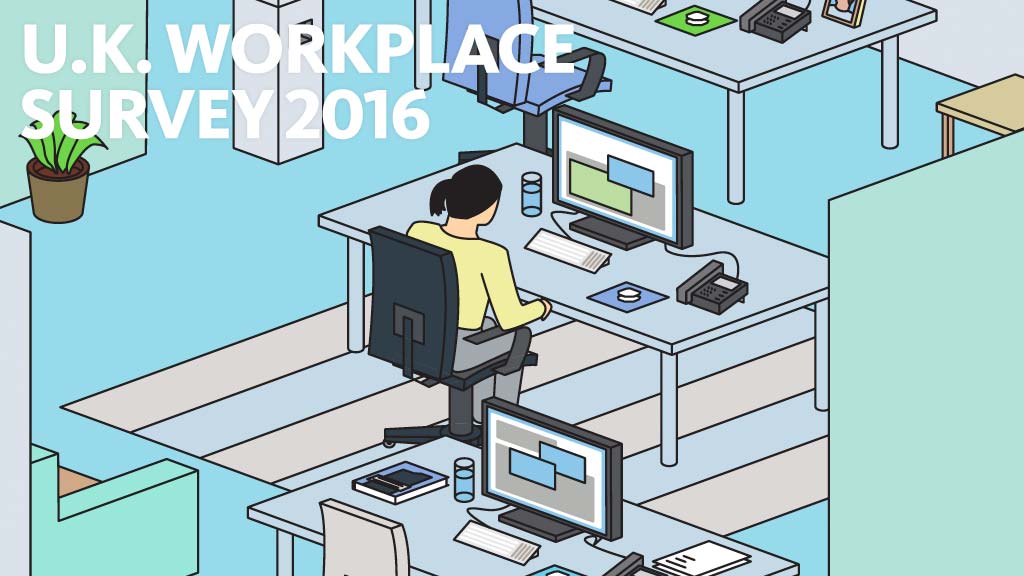July 12, 2016
Gensler Releases U.K. Workplace Survey 2016 Findings
Are badly designed open plan offices stifling business innovation and productivity in the UK?
LONDON – New study by Gensler reveals that variety and choice in the workplace environment drive creativity and job satisfaction.
Key findings include:
- The UK workforce seems to be divided into ‘haves and have-nots’, with mid and lower-tier workers confined to poor quality environments
- 67 per cent of the workforce feel drained due to their office environment at the end of each working day
- ‘Innovators’ spend just 3.5 days of the working week in the office, highlighting the need for greater flexibility in office design and remote working
Gensler has revealed in its 2016 Workplace Survey that badly designed open plan office environments are stifling innovation in businesses across the United Kingdom. Over 8 million UK employees work in open plan environments and many of these environments are not designed to promote creativity and innovation. The study indicates that overall the average workplace currently favours those in management positions, creating a generation of ‘haves and have-nots’.
Once billed as the epitome of modern workplace layouts, traditional open plan offices do not offer variety or choice, nor are they tailored to specific tasks and practices, with 70 per cent of employees forced to work in the same place throughout the day. The impact of this lack of choice is that only 33 per cent of respondents report feeling energised at the end of the day. Employees provided with a private office – usually the reserve of those in senior positions – rated their workplace environment the highest performing with those in management positions expressing greater job satisfaction and a sense of meaning.
Innovators are five times more likely to have access to a private space and favour working alone. They spend less time in face-to-face collaboration and only 3.5 days of their working week in the office, compared with the other end of the spectrum who spend 86 per cent of their time desk-bound. They also actively choose to spend less time in their assigned spaces by making regular use of conference rooms and open plan meeting areas for collaboration when they are in the office.
Survey respondents who scored highest for innovation achieved better productivity and effectiveness scores for all work modes – focus, collaboration, learning and socialising – and reported greater job satisfaction and a better relationship with their managers. The energy, pharmaceutical and creative industries are leading the way in workplace design by offering their employees the most choice.
Philip Tidd, Principal and Head of Consulting EMEA, Gensler, said: “Employees who scored lowest on innovation are one and a half times more likely to spend all day working in the same place and use their assigned desk for all manner of activities from intense concentration to team brainstorms. This is clearly not an effective use of space. Interestingly, enclosed office space is not the enemy and moving to a simplistic open plan may not be the most effective option in today’s hyper-connected workplace. Giving employees a greater variety of places and spaces along with the autonomy and choice to work when and where suits their task will boost innovation. Businesses should also think about matching space to need rather than hierarchy to engage employees of all levels of the organisation.”
Effective workplaces must support both the needs of the individual and the overall team, so businesses adopting an open plan strategy must provide a balanced environment of spaces for concentration and collaboration. Gensler’s four recommendations based on the results of the study are:
- Invest in your workplace and tailor space to the most important functions of your business to make open plan work environments more effective
- Diversify beyond the desk by including a variety of group work spaces inside and outside the office
- Empower the entire organisation, not just the senior leadership, to choose when and where they work
- Connect employees to their organisation and colleagues by adopting a workplace design strategy that supports their corporate purpose and sense of meaning
Philip Tidd continued: “A one size fits all approach is a fundamental mistake when it comes to workplace design. This holds true for a company’s approach to their own offices, but also to the notion of borrowing ideas or trends from other industry sectors – you need to do what is right for your particular business and the way your employees need to work. Getting the balance right will have a noticeable impact on the productivity, creativity and innovation of employees. Unfortunately, the gulf between the haves and have-nots appears quite dramatic. The ability to innovate is affected by the physical environment, so good workplace design is actually a way of getting ahead of the competition.”
Gensler’s 2016 Workplace Survey examined feedback from 1,210 employees at all job levels across 11 industries.
ContactAnnabel Turbutt-Day, Edelman
+44 (0)20 3047 2370
Melissa Scarlett, Edelman
+44 (0)20 3047 2175
Sarah_Ekundayo, Gensler
+44 (0)20 7073 9722
